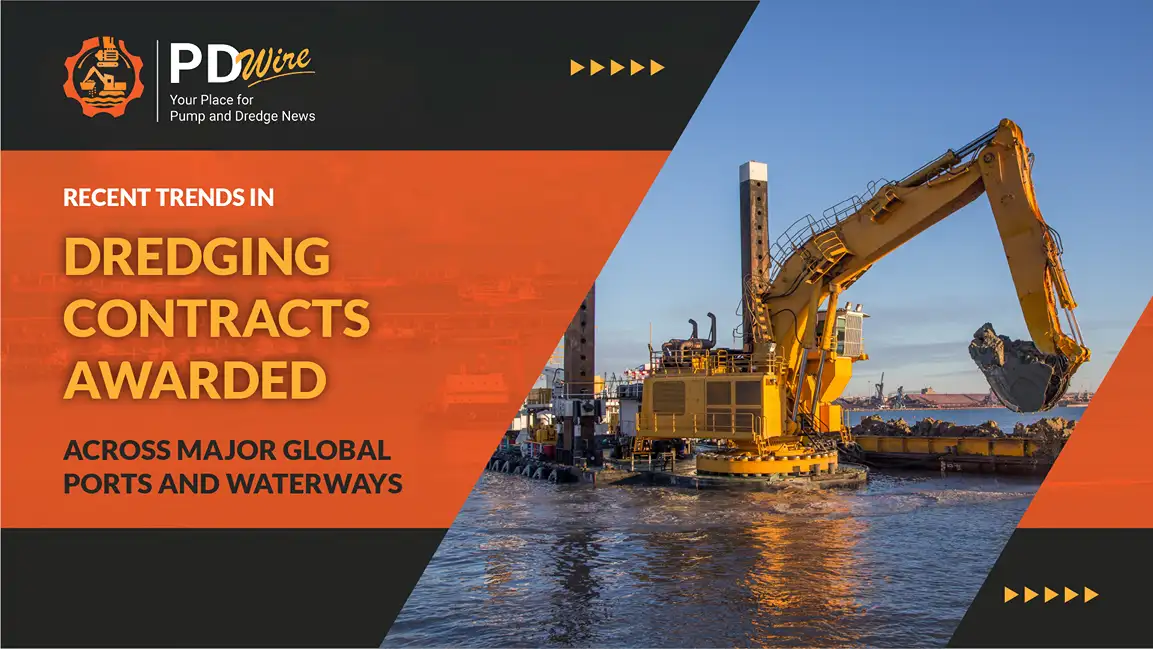I. Introdduction
Dredging, the process of removing sediment and debris from the bottom of water bodies, is crucial for maintaining navigable waterways essential for shipping and trade. It ensures that ports and harbors can accommodate the growing size of vessels and remain functional amidst shifting tides and sediments. As global trade continues to rise and larger vessels dominate the maritime industry, the demand for modern dredging solutions has surged. This has led to significant changes in how dredging contracts awarded are distributed across major global ports and waterways.
In recent years, there has been an increase in the number of dredging contracts awarded, driven by rapid infrastructure development and a growing focus on sustainability in dredging practices. Many of these contracts involve large-scale, high-value projects supported by both private contractors and government dredge contracts. These projects not only focus on expanding and maintaining key ports but also incorporate environmentally conscious dredging practices aimed at minimizing ecological impact.
In this blog, we will explore the key trends in dredging contracts awarded globally, with a particular emphasis on the rise of public dredging projects, the role of sustainability, and innovations in dredging technology. Additionally, we’ll examine notable case studies of recent dredging projects to better understand the evolving landscape of the industry.
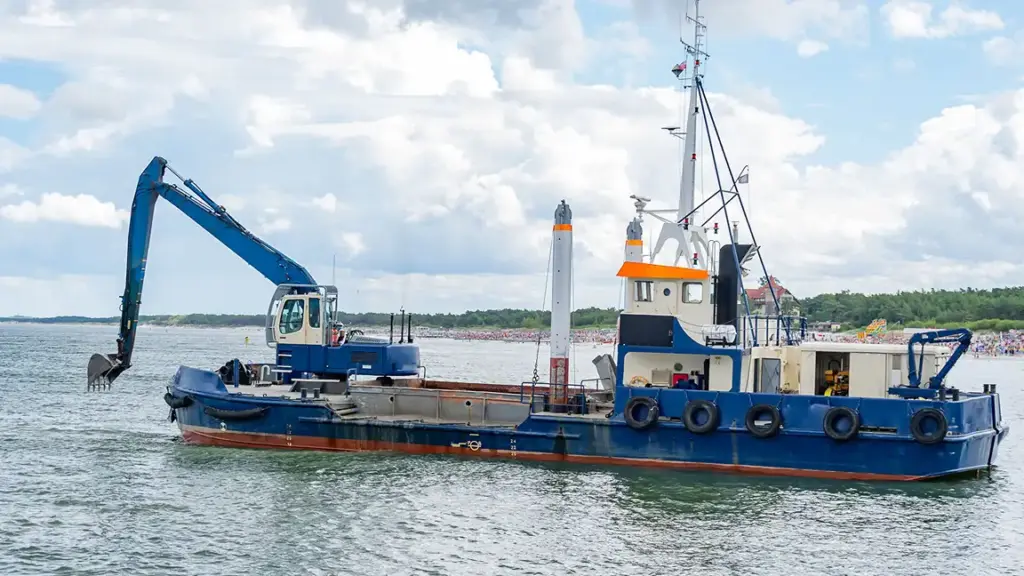
II. Global Overview of Dredging Contracts in 2024
Key Markets and Port Areas Seeing Growth
- Dredging activities are booming across various regions of the world, with some markets showing remarkable growth. In 2024, Asia, Europe, and North America continue to be the biggest hubs for dredging projects due to their status as global trade centers. Ports in these areas are seeing massive infrastructure upgrades to accommodate larger vessels, often referred to as Post-Panamax ships, which require deeper, wider channels. With this growth, numerous dredging contracts awarded reflect the increasing demand for such infrastructure improvements. Public dredging projects are also a significant part of the ongoing developments, especially in key global ports.
- Asia:
Asia, especially China, India, and Southeast Asia, remains one of the most active regions for dredging contracts awarded. In China, the rapid development of port infrastructure to support the Belt and Road Initiative has led to multiple large-scale dredging projects. Similarly, Southeast Asia’s emerging ports, such as in Vietnam and Malaysia, have begun expanding to meet the demands of increasing international shipping traffic. Public dredging projects are being prioritized to ensure the adequate depth for large vessels, driving up the number of government dredge contracts in these regions. - Europe:
The European Union continues to invest in port expansion projects to maintain competitiveness in global trade. Ports like Rotterdam and Hamburg have seen consistent dredging activity due to their strategic location for cargo transshipment. With many dredging contracts awarded for these projects, the focus in Europe is also on maintaining environmentally friendly practices, as these nations continue to push for sustainable dredging solutions. Additionally, several governments are offering government dredge contracts to further improve port infrastructure and ensure the efficient flow of goods across their borders. - North America:
The United States and Canada remain significant players in the dredging market. The U.S. Army Corps of Engineers oversees much of the dredging work in the country, with major projects focused on deepening the U.S. East Coast ports, such as those in New York and Miami, to handle larger vessels. Public dredging projects in the U.S. are particularly focused on improving navigability and supporting economic growth. Additionally, the ongoing Panama Canal expansion project has also spurred dredging contracts awarded in the region, with government dredge contracts playing a key role in the process.
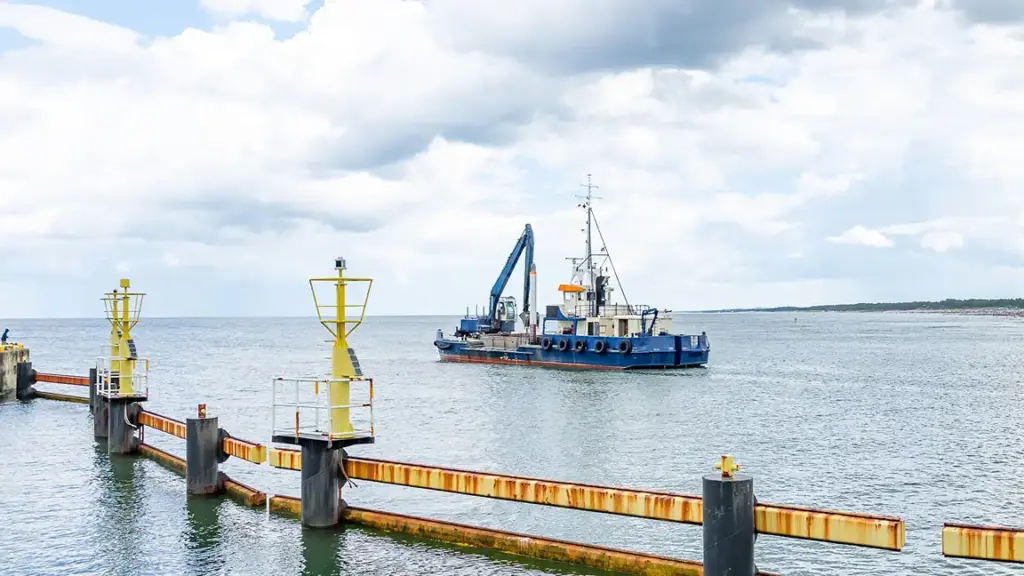
Economic Drivers of Dredging Activity
Several economic drivers are fueling the rise in dredging activity worldwide. One of the primary factors is the increasing size of ships. As shipping lines build larger, more efficient vessels capable of carrying greater cargo volumes, ports must deepen their channels and upgrade infrastructure to accommodate these mega-ships. The rise of Post-Panamax vessels, which are too large to fit through the Panama Canal before its expansion, has set new standards in cargo capacity.
Additionally, trade growth in emerging markets and the expansion of global supply chains are driving the demand for modernized port facilities, leading to a surge in dredging contracts awarded. Governments in both developed and developing nations are investing heavily in port infrastructure to meet these evolving needs. Dredging contracts awarded to public dredging projects are becoming essential to enhance port capacities, ensuring that ports remain competitive on the global stage.
Finally, addressing climate change and rising sea levels has prompted more dredging projects aimed at reinforcing coastal protection systems to ensure port viability amid changing environmental conditions. Many of these efforts are supported by government dredge contracts, which fund large-scale infrastructure improvements to protect and expand vital port areas, making them more resilient and capable of handling future demands.
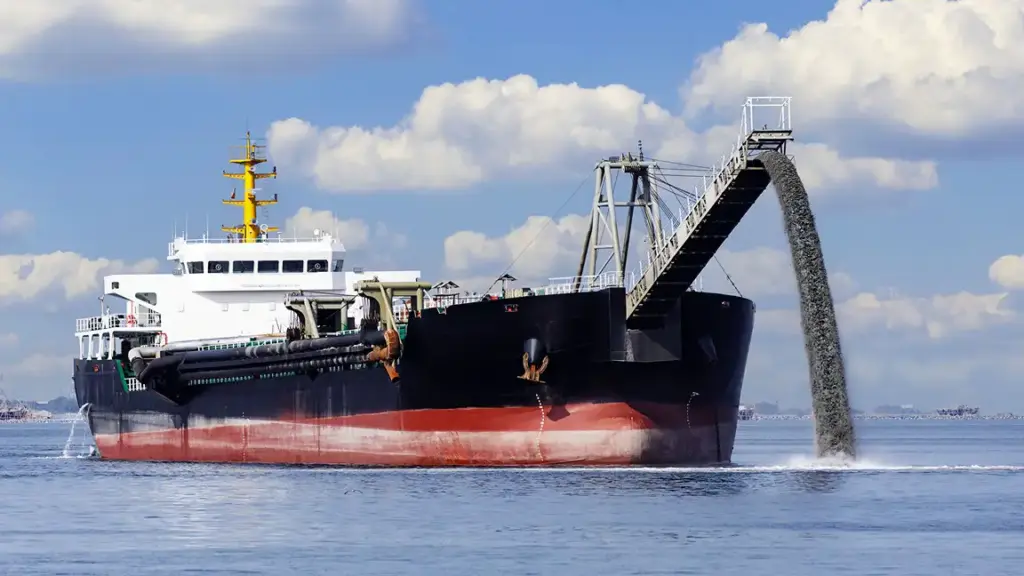
III. Key Trends in Dredging Contracts Awarded
Increase in Public and Government Dredging Contracts
A notable trend in recent years is the increase in public dredging and government dredge contracts. This surge is largely driven by the growing understanding that dredging is a vital public service for maintaining the functionality of ports, harbors, and inland waterways. Many of these projects are funded by national or regional governments, with an emphasis on expanding port capacity, improving trade infrastructure, and safeguarding local ecosystems. The rising demand for dredging to support global trade and secure maritime routes is prompting governments around the world to allocate more resources to dredging projects.
Specifically, government dredge contracts are becoming more prominent as nations recognize the necessity of preserving key maritime trade routes to maintain their competitiveness. In the United States, for example, the U.S. Army Corps of Engineers has overseen numerous dredging efforts, particularly along the East Coast, to deepen shipping lanes for larger Post-Panamax vessels. Similarly, in Asia, governments are ramping up efforts to modernize port infrastructure to meet the demands of growing international shipping traffic.
The surge in dredging contracts awarded across the globe reflects the prioritization of such projects, with many nations emphasizing infrastructure investments to remain competitive in the global economy. This increase in dredging contracts awarded highlights the growing importance of government-backed dredging initiatives, which are essential for expanding and modernizing port facilities to handle the challenges of larger vessels and growing trade volumes.
Example:
One of the most notable examples of government-backed dredging projects in recent years is the expansion of the Panama Canal. The canal, which plays a crucial role in international shipping, underwent extensive dredging work to accommodate larger vessels. The government awarded this large-scale project to a consortium of contractors, and it remains one of the largest and most ambitious dredging efforts in the world, highlighting the importance of government involvement in such monumental infrastructure projects.
Technological Advancements in Dredging Equipment
Another significant trend in the dredging industry is the rapid advancement of technology. As dredging projects become increasingly complex, contractors are turning to cutting-edge technologies to improve efficiency, reduce environmental impact, and optimize project costs. Advanced dredging machinery, GPS-based navigation systems, and automated processes are transforming how these projects are executed.
For example, robotic dredgers capable of operating remotely are now being employed to minimize human intervention in hazardous environments. GPS technology ensures precise depth measurements, meeting the required specifications without over-dredging, thus preventing unnecessary environmental damage. Automated systems are also playing a key role, enabling real-time monitoring and data analysis. This technology allows contractors to make immediate adjustments during projects, enhancing both the speed and quality of operations. As a result, dredging contracts awarded are becoming more efficient, cost-effective, and timely.
Furthermore, public dredging projects are increasingly benefiting from these technological advancements, allowing for greater sustainability and reduced environmental impact. The ability to incorporate these innovations into government dredge contracts ensures that projects are not only more efficient but also aligned with regulatory and environmental standards.
Sustainability and Environmental Considerations
Sustainability has become a key focus in the dredging industry, driven by growing pressure from the public and regulatory bodies to reduce environmental impact. Governments and environmental organizations are pushing for greener dredging practices that minimize disruption to underwater ecosystems and limit pollutant release.
A significant trend in sustainable dredging is the management of dredge spoil. Contractors are exploring ways to repurpose dredged material for land reclamation, beach nourishment, or creating artificial reefs. These methods not only mitigate environmental damage but also offer opportunities for environmental restoration. As dredging contracts awarded increasingly prioritize sustainability, public dredging projects are setting new standards, and government dredge contracts are adopting eco-friendly practices to align with both infrastructure and environmental goals.
Example:
In Europe, the Netherlands has led the way in eco-friendly dredging. The Port of Rotterdam, for instance, used dredged material to create wetlands, turning waste into an asset that benefits both the environment and the economy.
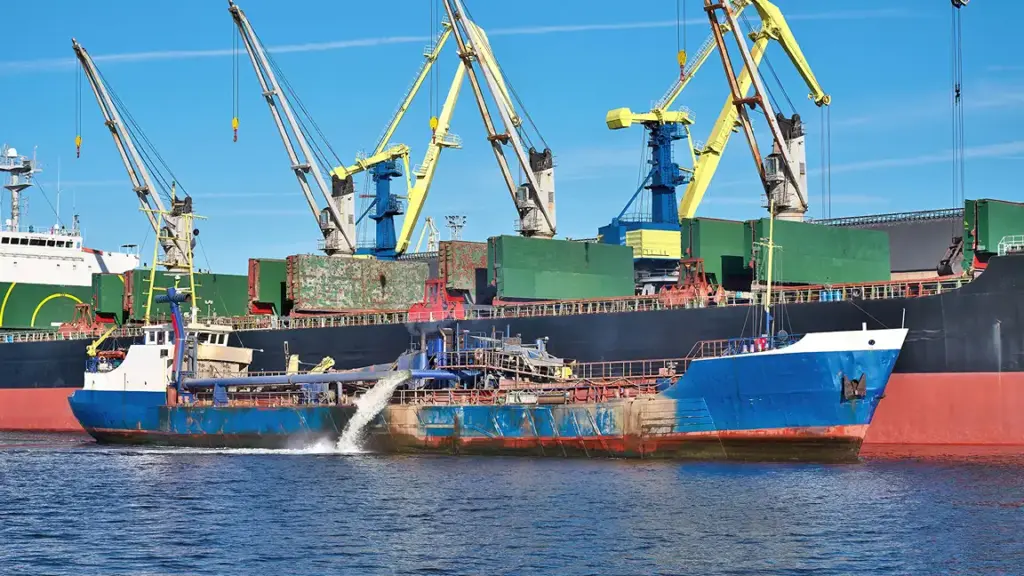
IV. Challenges and Opportunities in the Dredging Industry
Challenges in Securing Dredging Contracts
The dredging industry faces significant challenges in securing new contracts due to increasing competition. Large-scale projects require substantial capital investment, and bidding processes are often complex, making it difficult for smaller contractors. As demand grows, the number of dredging contracts awarded increases, but securing these contracts requires navigating a highly competitive landscape.
Dredging projects also face delays from environmental regulations and lengthy permitting processes. Contractors must comply with strict local and international standards, which can lead to higher costs and longer timelines. Public dredging projects, in particular, face added scrutiny as sustainability and ecological preservation become top priorities. With more dredging contracts awarded, contractors must be ready to meet these demands, especially for government dredge contracts.
Opportunities for Contractors in Emerging Markets
Despite challenges, there are significant opportunities for contractors in emerging markets. Southeast Asia, Africa, and Latin America are rapidly developing their port infrastructure to support growing trade volumes, making these regions key growth areas for dredging companies. The increase in dredging contracts awarded highlights the rising demand for modernized ports.
Public-private partnerships are also becoming more common, allowing contractors to collaborate with government agencies and secure government dredge contracts for large-scale projects. These efforts often involve building new ports or expanding existing ones, creating ample opportunities for contractors to apply their expertise, particularly in public dredging projects.
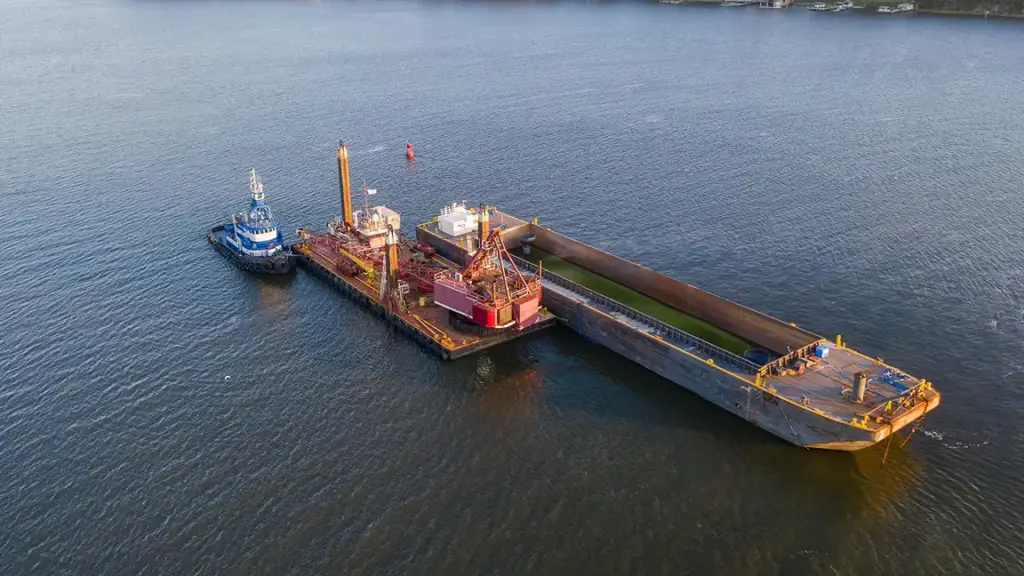
V. Case Studies of Recent Dredging Contracts
Case Study 1: Rotterdam Port Dredging Project
Rotterdam, one of the busiest ports in Europe, is continuously working to expand its capacity to handle larger vessels. A recent dredging contracts awarded involved deepening the harbor’s shipping channels to accommodate ultra-large container ships. The project utilized advanced dredging equipment, including environmental dredgers, and employed sustainable practices such as creating artificial reefs with the dredged material, making it a standout example of public dredging projects that prioritize both infrastructure development and environmental preservation.
Case Study 2: U.S. East Coast Dredging for Post-Panamax Vessels
On the U.S. East Coast, ongoing dredging contracts awarded for ports like Miami and New York focus on accommodating the next generation of mega ships. Following the Panama Canal expansion, these ports needed to deepen their channels and widen their entrances to remain competitive in global trade. The U.S. Army Corps of Engineers has overseen these projects, with contractors utilizing cutting-edge technology to meet stringent environmental and safety regulations.
Case Study 3: Singapore’s Expansion of Deep-Water Terminals
Singapore’s port expansion is a prime example of how dredging enhances national trade competitiveness. In this project, dredging contracts awarded for public dredging efforts aim to accommodate larger vessels and increase port handling capacity. The country has also prioritized minimizing the environmental impact of dredging by implementing innovative technologies such as sediment resuspension control systems and water quality monitoring tools, ensuring that the expansion aligns with sustainability goals.
Conclusion
The dredging industry is experiencing significant growth, fueled by the increasing demand for dredging contracts awarded at major global ports. Key trends include the rise of public and government-backed contracts, technological advancements, and a stronger focus on sustainability. As ports expand to accommodate larger vessels and meet growing trade needs, dredging plays a vital role in maintaining efficient maritime infrastructure. The surge in dredging contracts awarded reflects the industry’s ongoing evolution and the prioritization of modernizing key maritime infrastructure.
Looking ahead, the industry will continue to evolve, driven by technological progress, environmental concerns, and rising trade volumes. Contractors who adapt to the growing emphasis on public dredging and government dredge contracts will be well-positioned to capitalize on the expanding opportunities in this dynamic sector, with more dredging contracts awarded as nations invest in their port infrastructure.
